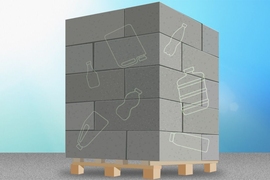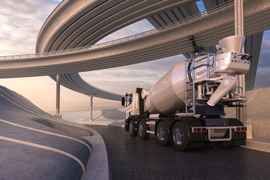In the face of limited funding to address massive infrastructure needs, and with climate action at top of mind, it is more important than ever for engineers, designers, and policy makers to understand the full economic and environmental costs of infrastructure project decisions — and not just impacts relating to material choice or from initial construction, but the impacts of choices across the entire life cycle of a project.
“As we develop strategies to reach sustainability goals, it is vital that we adopt methodologies that use a life-cycle perspective to evaluate impacts and use that knowledge to create a strategic path moving forward,” says Jeremy Gregory, research scientist in the MIT Department of Civil and Environmental Engineering and executive director of the MIT Concrete Sustainability Hub (CSHub).
Life-cycle analysis methodologies exist for both environmental and economic impacts: Life cycle assessment (LCA) examines environmental impacts, while life cycle cost analysis (LCCA) examines economic impacts. LCA and LCCA enable engineers, designers, and decision-makers to better understand opportunities that exist to reduce environmental and economic impacts, but CSHub research has found that these tools are rarely used at a point in the decision-making process when they can have the greatest impact. The CSHub team recently released several new papers and materials discussing research designed to improve life cycle thinking for buildings and pavements.
“For buildings, placing too much emphasis on minimizing initial costs and not paying enough attention to the use phase can lead to higher costs, both environmentally and economically,” says Gregory. “Construction projects that focus on first costs fail to account for costs associated with lifetime energy use, and the stakeholders who aren’t typically involved in early planning stages, such as future homeowners, insurance agencies, and taxpayers, are the ones left holding the bill.”
The environmental impacts are significant; in the United States, the heating, cooling, and operation of buildings and homes accounts for more than 40 percent of carbon dioxide emissions each year. The CSHub has several projects underway that quantify the full life cycle impacts of buildings, from initial construction to demolition, and has developed building LCA tools that allow impacts to be quantified earlier in the design process than is allowed by traditional methodologies. Researchers have published several recent papers on the topic. All five papers can be found on the CSHub website in a section dedicated to building LCA.
“LCA and LCCA approaches work best when they accompany each other, by providing the necessary economic context to implement solutions into the marketplace,” explains Gregory. “Poorly insulated and leaky residential construction leads to high annual energy costs, which can result in substantially higher life-cycle costs. Likewise, roadway closures cause traffic congestion, which leads to higher costs for road users.”
For pavements, CSHub LCA work considers all life-cycle phases from initial construction to demolition, including operation, maintenance, and end-of-life phases, and factors such as traffic delay, lighting demand, and future maintenance, while LCCA research considers life cycle, context, and future, and also incorporates risk.
The team recently released a pavements LCCA and LCA info sheet, which highlights key concepts and statistics from CSHub studies. CSHub tools use probabilistic price projections compatible with existing software tools used by pavement designers, such as the Federal Highway Administration’s RealCost tool. One of the studies highlighted noted a 32 percent improvement on 20-year cost estimates and LCCA results for roadway projects in Colorado when using CSHub models.
CSHub research is supported by the Portland Cement Association and the Ready Mixed Concrete Research and Education Foundation.









